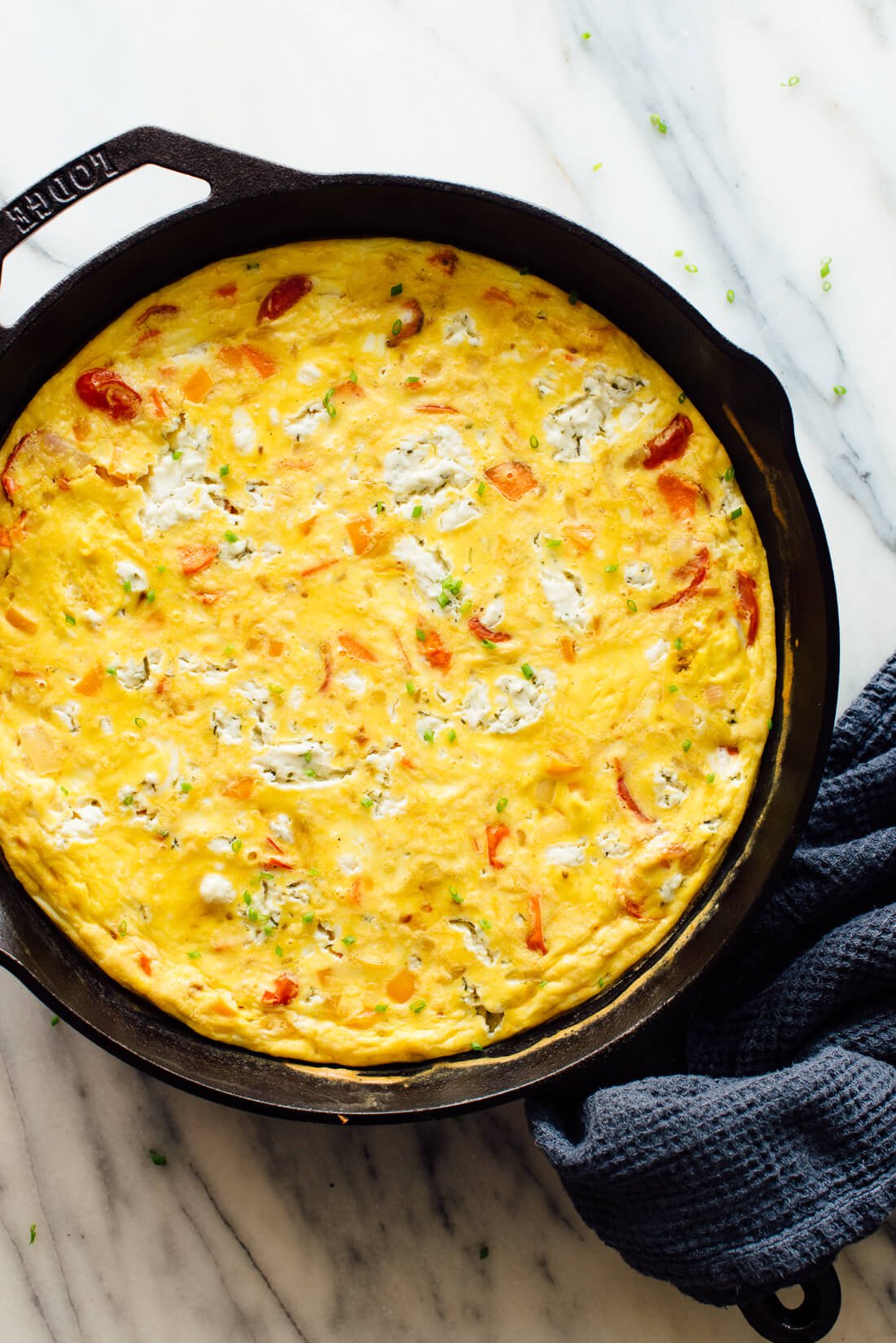
Have you ever had an amazing frittata? The perfect frittata is creamy, custardy, and full of veggies. It is not dry, sponge-like or bland.
Frittatas are the ultimate clean-out-the-fridge weeknight dinner or weekend brunch recipe. Frittatas also transport well, so you can bring slices to picnics or pack them up for work lunches.
You can get creative with leftover frittata—use a slice as a sandwich filling, or break it up for easy breakfast tacos.
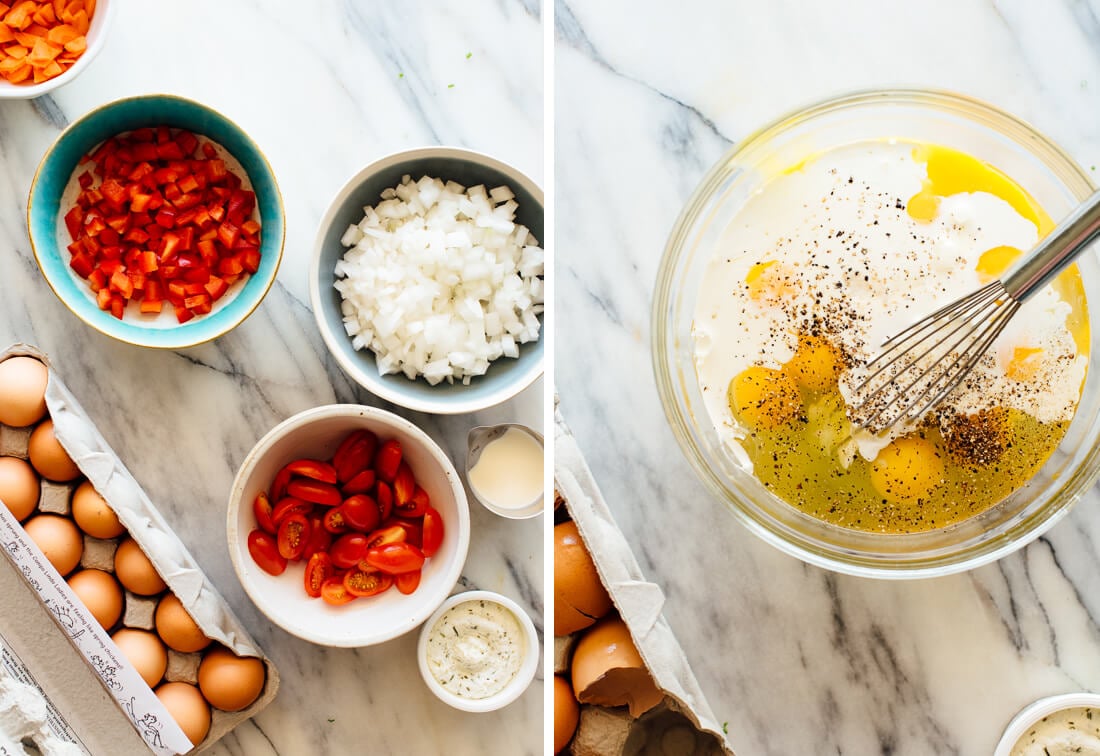
Frittatas can be intimidating at first, but they’re very easy to make if you know what you’re doing. So today, I’m sharing a comprehensive guide to making a perfect frittata, every time.
I’ve been disappointed by traditional frittatas before, so I went back to the basics. I pitted America’s Test Kitchen’s frittata guidelines against Bon Appetit and Epicurious, and came up with my own go-to methods.

Traditional Frittatas vs. Baked Frittatas
In my recipe, you’ll learn how to make traditional frittatas using the stovetop-to-oven skillet method. I made sure to use a reasonable oven temperature (not the broiler) and suggest cooking the frittata on the middle rack, so you can watch it while it cooks. Life’s too short for burnt frittatas!
I’ve also provided instructions on how to make baked frittatas (in a casserole dish or muffin tin), which are more hands-off. The baked options are particularly great if you need a make-ahead option or when your stovetop is otherwise occupied.
Which version is my favorite? They all turn out equally well. The only real deciding factor is which method works best for you.
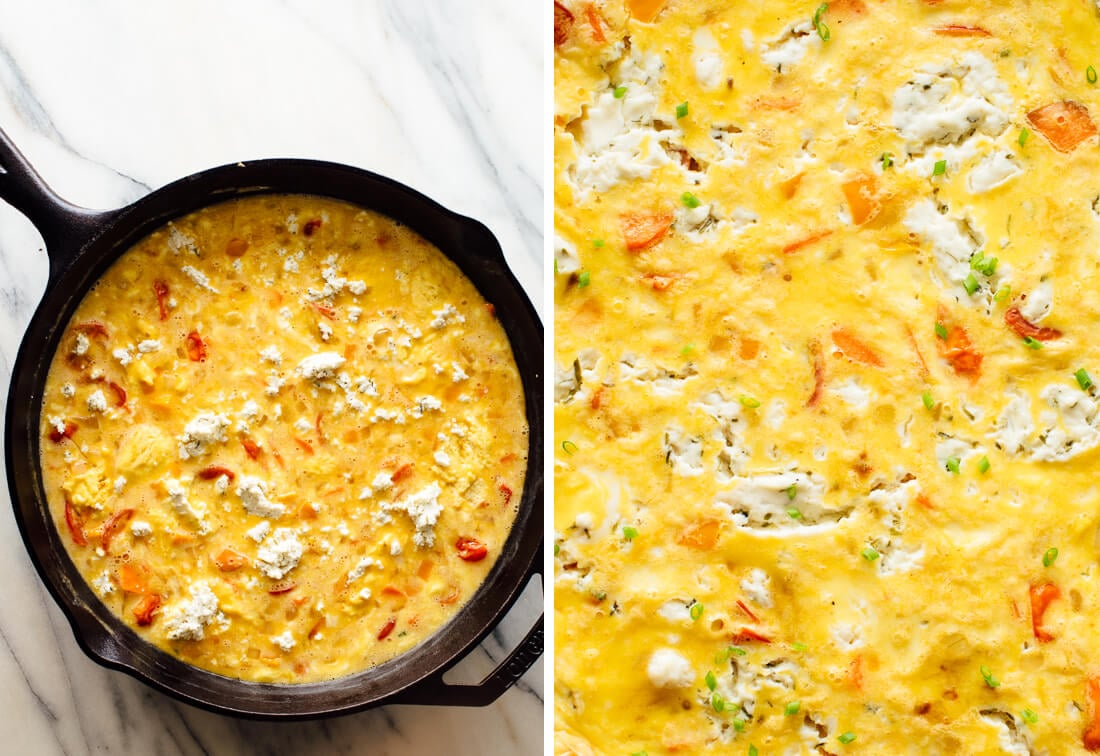
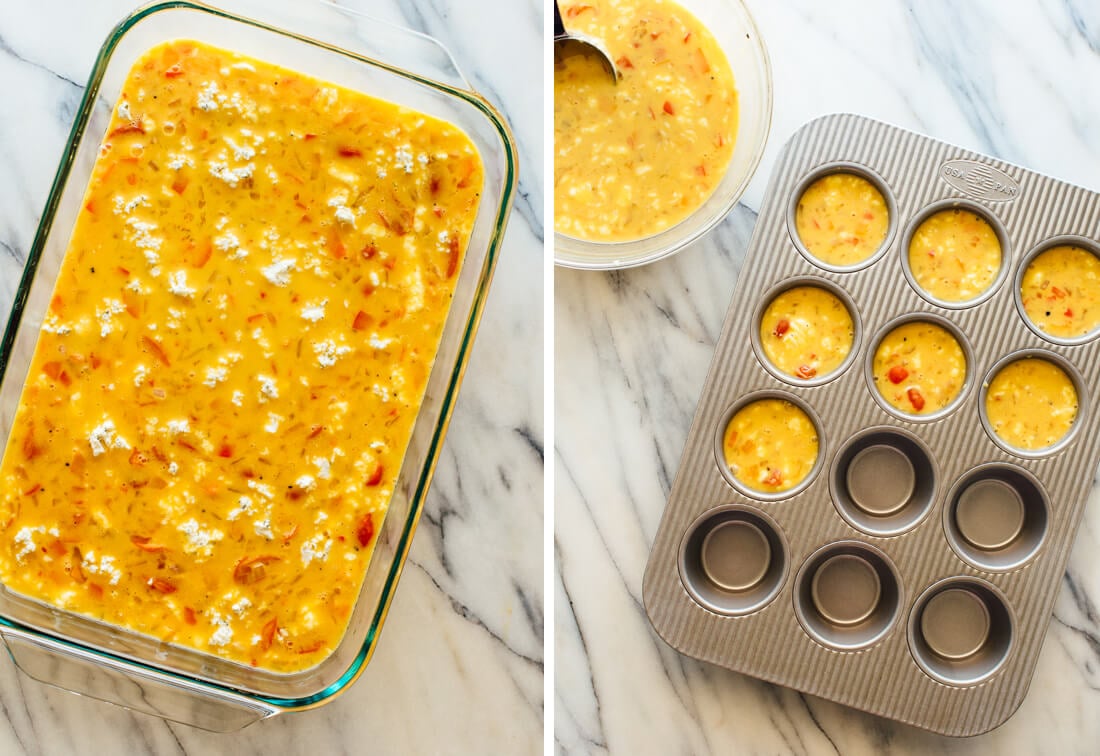
Basic Frittata Formula
- 12 eggs, whisked just until the egg yolks and whites are blended
- 3 tablespoons full-fat dairy
- 3 cups cooked and seasoned vegetables or other add-ins
- 1 cup (4 ounces) grated or crumbled cheese
- 1/2 teaspoon salt
Recommended Frittata Flavor Combinations
- Spinach, artichoke and feta cheese
- Broccoli, cheddar and green onion
- Cremini mushrooms, arugula and goat cheese
- Cherry tomatoes, zucchini, mozzarella and basil
- Shown here: yellow onion, carrot, bell pepper, goat cheese and chives
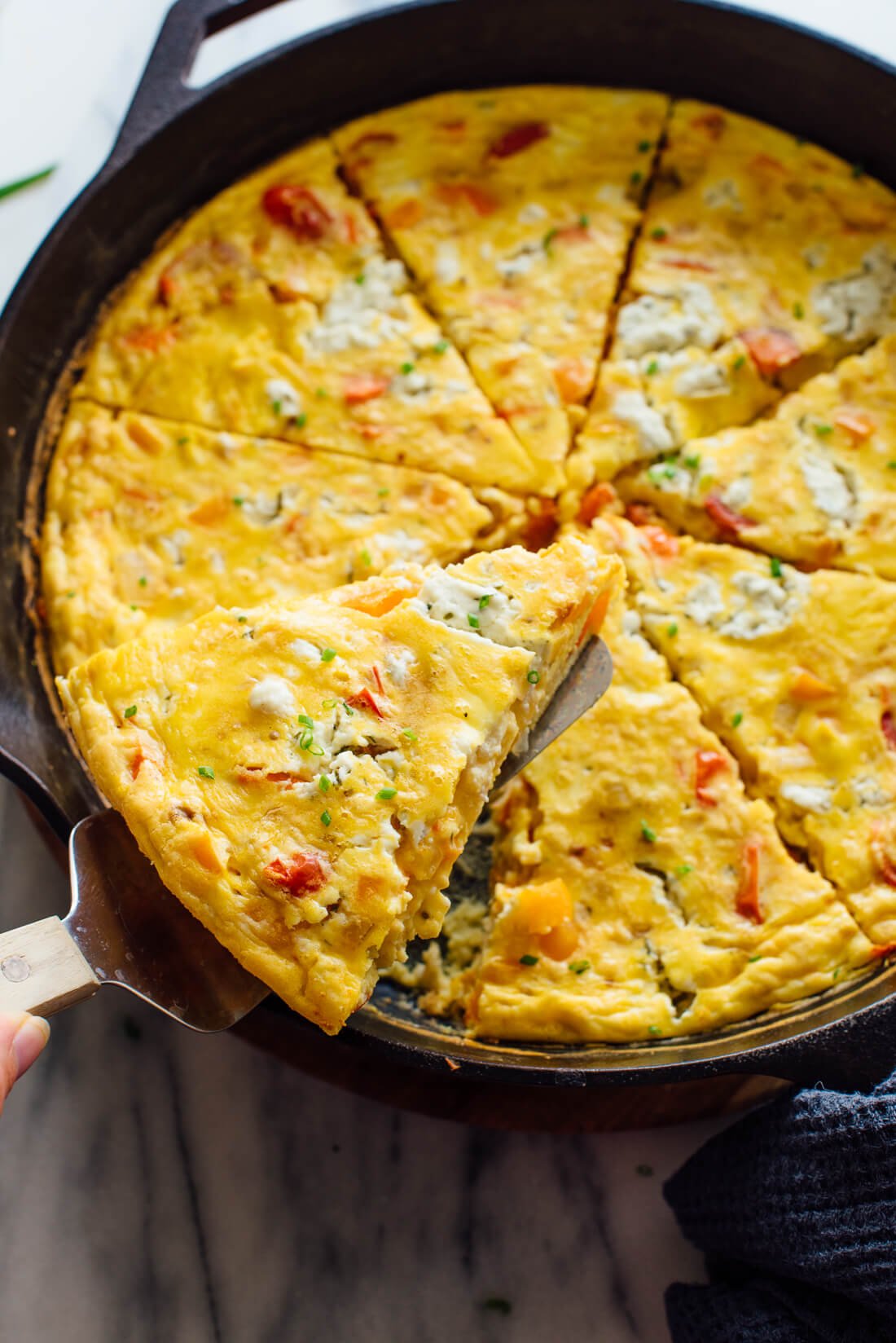
General Frittata Tips
Dairy options
Use full-fat dairy. I’ve had great results with heavy cream, half-and-half and whole milk. Sour cream, crème fraîche and yogurt will work as well. However, two percent and skim milk are too watery. Omitting the dairy altogether results in a frittata that is, unsurprisingly, more eggy in flavor and less creamy.
Testing notes: America’s Test Kitchen recommends just three tablespoons of dairy and Bon Appetit recommends 1/2 cup. I tried both and slightly preferred the America’s Test Kitchen version, so I opted for the lower amount.
Pre-cook your vegetables, and use a lot of them
Vegetables should be tender, seasoned and cooked before adding the eggs. Raw vegetables release too much water and won’t be fully cooked by the time the eggs are done. Pre-cook your vegetables by sautéing, roasting, or steaming them to bring out their best qualities.
A large frittata made with one dozen eggs can accommodate up to three cups cooked vegetables, so that means you’ll need even more than three cups of raw vegetables!
Cheese is a good idea
Cheese offers extra flavor and up the creamy factor. I love to use soft cheeses like goat cheese. Sharp cheddar and Parmesan are delicious as well.
You can stir up to one cup of grated or crumbled cheese directly into the egg mixture, or reserve some for topping the frittata. While I live for golden, bubbling cheese on pizza and lasagna, don’t aim for a golden top when it comes to frittatas. Which brings me to my next point.
Don’t overcook your frittata
Keep an eye on your frittata while it’s in the oven. Bake until the eggs are puffed and opaque, and the center of the frittata jiggles just a bit when you give it a gentle shimmy.
The frittata will continue cooking once you remove it from the oven due to residual heat. Overcooked eggs smell like sulphur and have a dry, spongey texture—not good!
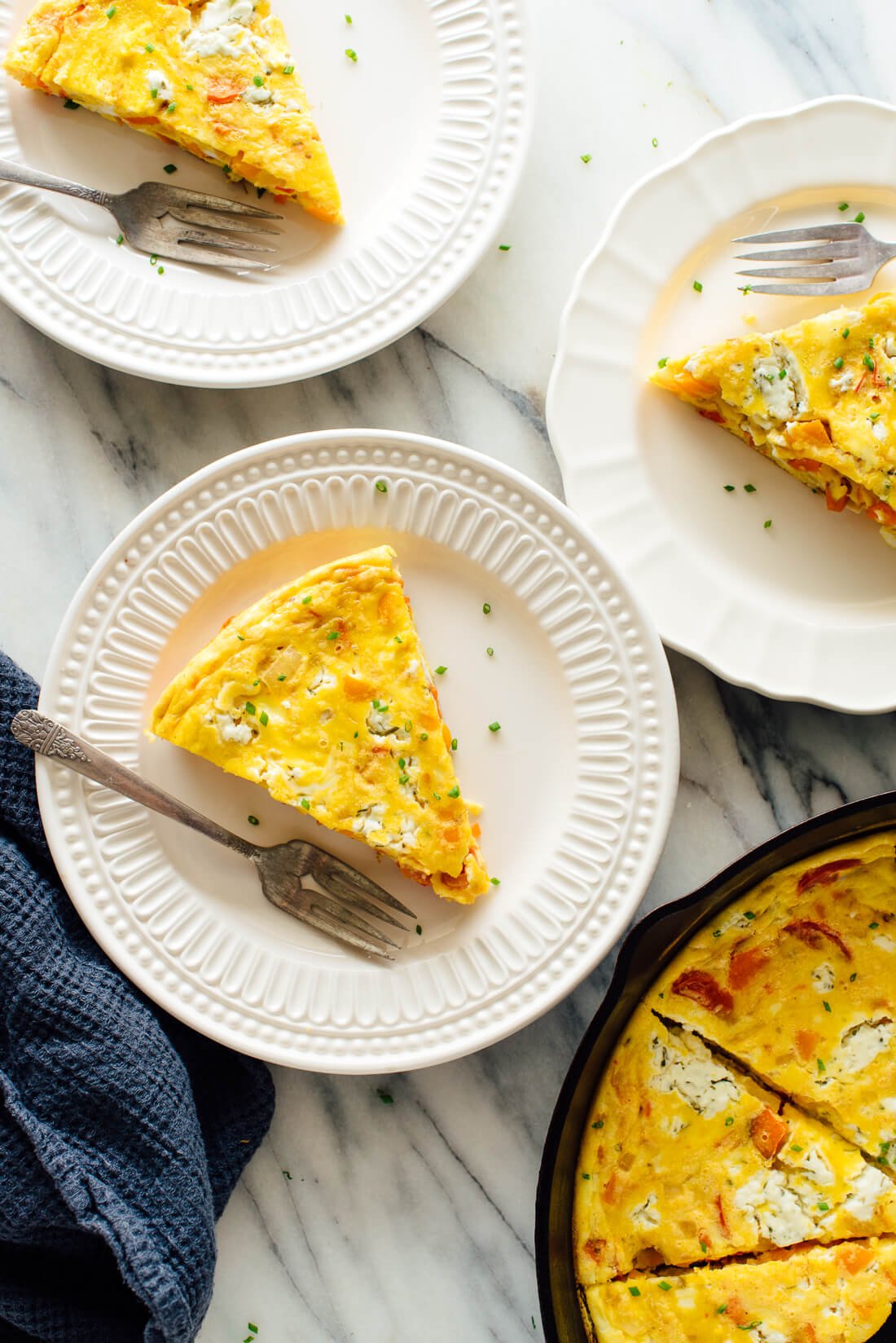
Frittata Notes
How to scale this recipe
My recipes calls for twelve eggs. You can halve this recipe and use a smaller skillet (say, 8″) or baking dish. Smaller frittatas will finish baking earlier, so adjust accordingly and keep an eye on them.
I don’t recommend trying to cut the recipe by more than one-half, since frittatas are inherently a large-batch item. How about egg sandwiches or toasts instead?
Recommended frittata pans
For the stovetop-to-oven method, use a well-seasoned cast iron skillet (affiliate link) or an oven-safe, non-stick skillet.
If you’re opting for a baked method, use a well-oiled baking dish or muffin tin (I actually didn’t have to oil this muffin tin, but my other “non-stick” muffin tin caused problems. Oil your pan to be safe).
What to serve with frittatas
Frittatas make a great main dish for any meal of the day. Or, you can treat a frittata as a side dish in a larger breakfast spread (especially mini frittatas).
Sides that complement frittatas include simple green salads, breakfast potatoes or hash browns, and toasted whole-grain bread.
Frittata garnishes and toppings
Frittatas don’t always win the beauty contest. For extra visual appeal, finish your frittata off with a sprinkle of fresh, leafy herbs (such as basil, parsley or cilantro) or snipped fresh chives.
For an extra-luxurious frittata, top individual slices with a dollop of pesto or your favorite herbed condiment. Another option? Finish them with a very light drizzle of thick balsamic vinegar or balsamic glaze. Working with a Mexican-ish frittata? Try hot sauce or gently warmed salsa.
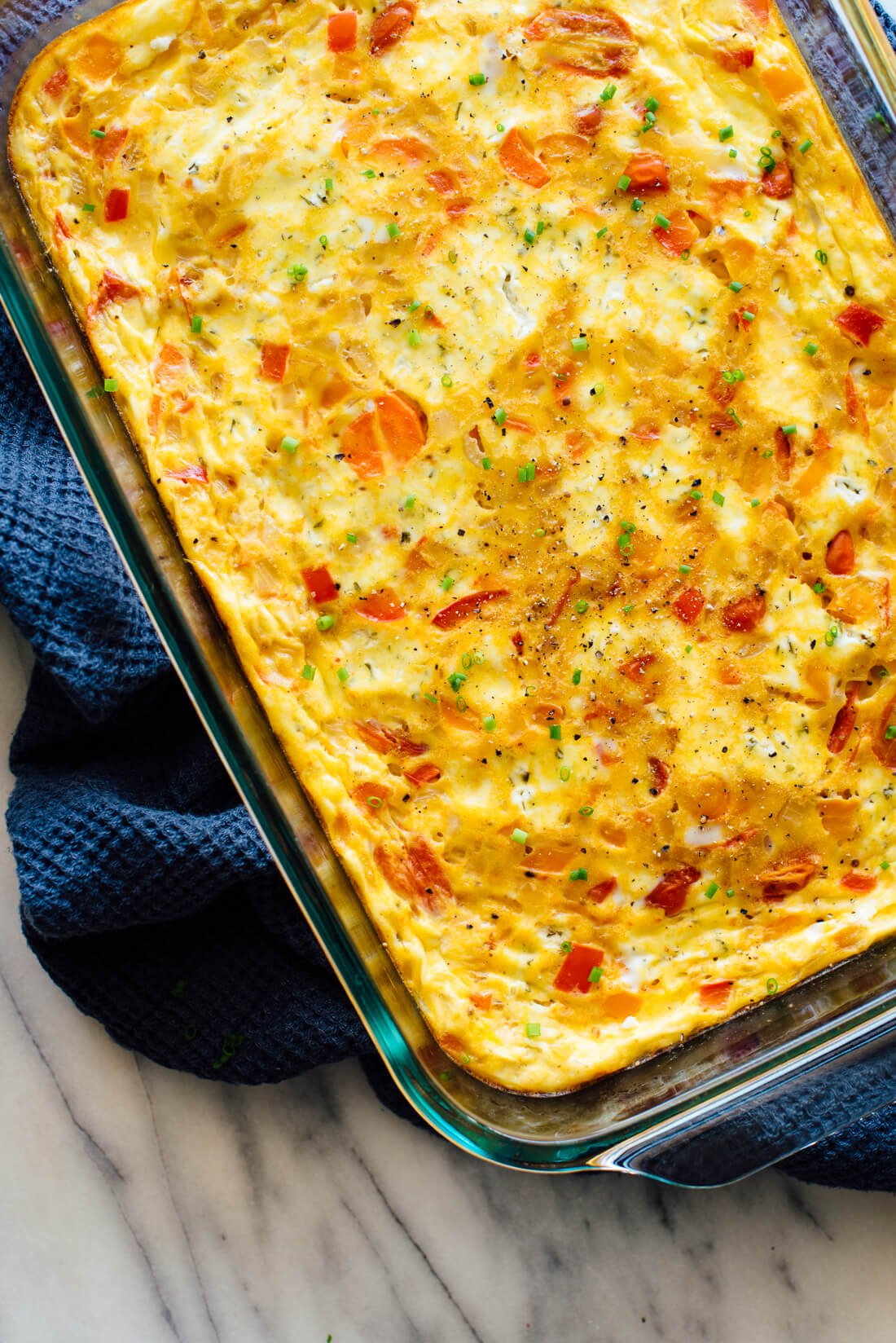
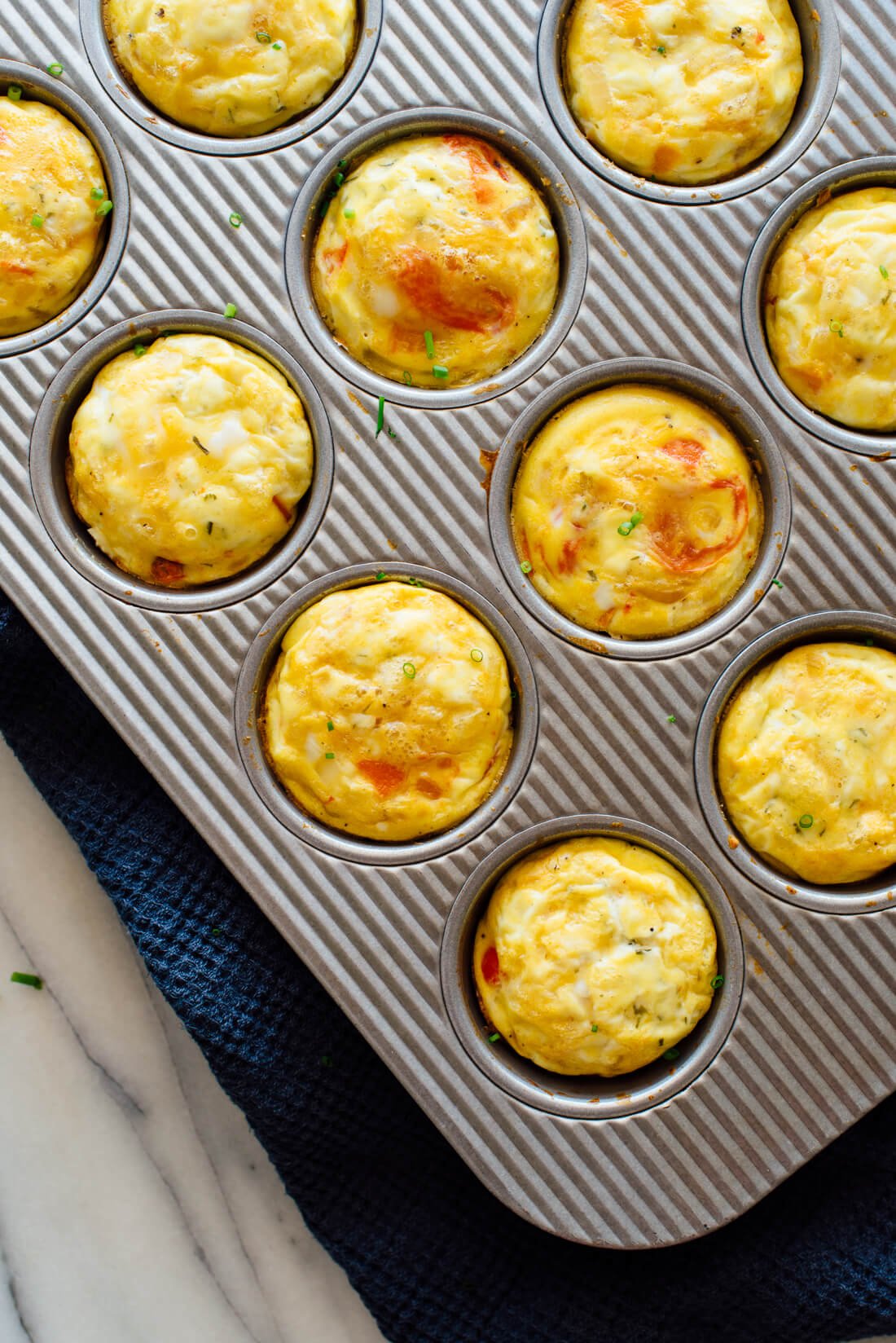
How to Make Frittatas (Stovetop & Baked)
- Author:
- Prep Time: 20 minutes
- Cook Time: 25 minutes
- Total Time: 45 minutes
- Yield: 8 servings
- Category: Breakfast
Learn how to make the perfect frittata with this comprehensive guide! This recipe assumes you’re cooking the vegetables in your skillet—if you’re using leftover vegetables for the stovetop option, simply warm them in the skillet before adding the eggs. Recipe yields 1 large frittata or 18 mini frittatas (approximately 8 servings).
Ingredients
- 12 eggs
- 3 tablespoons full-fat dairy (heavy cream, half-and-half, whole milk, sour cream, crème fraîche or yogurt)
- ½ teaspoon salt
- 1 cup (4 ounces) grated or crumbled cheese
- 3 to 5 cups vegetables or greens of choice (or 3 cups leftover cooked vegetables or greens)
- 1 tablespoon olive oil
- Garnish: Chopped or torn fresh, leafy herbs (basil, parsley, cilantro, or dill)
Instructions
- Preheat the oven to 425 degrees Fahrenheit for the traditional stovetop method, or 350 degrees for the baked methods (casserole or mini/muffins).
- Crack the eggs into a medium mixing bowl. Add your dairy of choice and the salt. Whisk just until the egg yolks and whites are blended. Whisk in all or half of the cheese (you can reserve the other half for topping the frittata before baking, if desired). Set the mixture aside.
- Warm the olive oil in a 12″ cast iron skillet or oven-safe non-stick skillet until shimmering. Add the vegetables, starting with chopped onions or other dense vegetables. Cook for a few minutes, stirring occasionally, then add any softer vegetables such as zucchini. Cook until those vegetables are tender, then add any garlic or greens, and cook until fragrant or wilted. Season with salt, to taste.
- Traditional stovetop option: Whisk the eggs once more and pour the mixture over the vegetables. Stir with a spatula briefly to combine and distribute the mixture evenly across the pan. If you reserved any cheese, sprinkle it on top of the frittata now.
- Once the outside edge of the frittata turns lighter in color (about 30 seconds to 1 minute), carefully transfer the frittata to the oven. Bake for 7 to 14 minutes (keep an eye on it), until the eggs are puffed and appear cooked, and the center of the frittata jiggles just a bit when you give it a gentle shimmy. Remove the frittata from the oven and place it on a cooling rack to cool. Garnish with herbs, slice with a sharp knife, and serve.
- Baked casserole option: Let the cooked vegetables cool for a few minutes, then stir them into the egg mixture. Grease a 9 by 13″ pan, then pour the mixture into the pan. If you reserved any cheese, sprinkle it on top of the frittata now.
- Bake for 20 to 25 minutes (keep an eye on it), until the eggs are puffed and appear cooked, and the center of the frittata jiggles just a bit when you give it a gentle shimmy. Remove the frittata from the oven and place it on a cooling rack to cool. Garnish with herbs, slice with a sharp knife, and serve.
- Baked mini frittata option: Let the cooked vegetables cool for a few minutes, then stir them into the egg mixture. Grease 18 muffin cups (I used two muffin pans for this), then fill the cups evenly with a scant ⅓ cup of the mixture. If you reserved any cheese, sprinkle it on top of the frittatas now.
- Bake for 13 to 17 minutes, until the eggs are puffed and appear cooked, and the center of the frittatas jiggle just a bit when you give the pan a gentle shimmy (this happens quickly so keep an eye on them; my pan with only 6 muffins finished sooner). Remove the pans from the oven and place them on a cooling rack to cool. Garnish with herbs, and serve.
Notes
Storage suggestions: Frittata leftovers keep well for a few days in the refrigerator. You can serve leftover frittata chilled, let it come to room temperature on its own, or gently warm individual slices in the microwave or oven.
Can I freeze it? I don’t recommend freezing leftover frittata. When I defrosted my frozen slices, they turned very watery and slightly rubbery. If you’re looking for a good egg-based freezer recipe, check out my breakfast burritos.
Prepare in advance: The baked method is best for make-ahead frittatas. You can whisk the eggs, cooked vegetables and cheese together in advance. Cover and refrigerate the mixture until you’re ready to bake (it should keep well for up to two days). Grease a casserole dish or muffin tin and bake as directed above.
▸ Nutrition Information
The information shown is an estimate provided by an online nutrition calculator. It should not be considered a substitute for a professional nutritionist’s advice.

0 comments